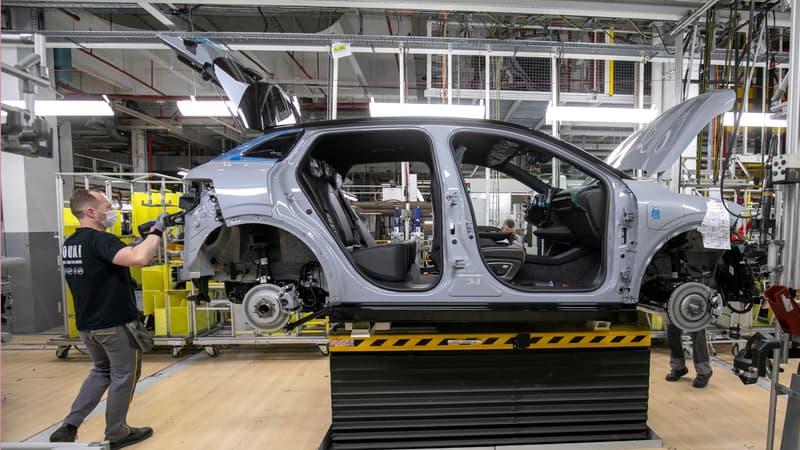As France turns its auto industry toward electricity, the trade deficit continues to widen. In the last 12 months analyzed (from June 2022 to May 2023), the difference between exports and imports of new vehicles in France fell to 17.46 billion euros, according to customs figures taken by the echoes.
The trade deficit in the automotive sector was 15,600 million euros in all of 2022 and 12,000 million in 2019, before Covid, underlines the economic newspaper.
A top 10 very little “made in France”
First reason for this aggravation of the deficit: the best-selling models in the country, although they are mostly French brands, are not manufactured in France. This is especially the case for the stars of the market, with the Renault Clio, assembled in Turkey and Slovenia, and the Peugeot 208, in Slovakia and Morocco for thermal versions, while the electric version was recently transferred to Spain.
In third place is the Dacia Sandero (Romanian brand, but owned by Renault) produced in Morocco, since production was stopped last year in Pitesti, Romania.
The only exception in the top 10 is the Peugeot 308, produced in Mulhouse (Haut Rhin). The other stars of “made in France” have left the top of the ranking. This is the case of the Peugeot 3008, produced in Sochaux (Doubs), at the end of its commercial life before the presentation of its successor in September and which is in eleventh place.
The same observation applies to the Toyota Yaris Cross (the most produced car in France in 2022) and the Yaris, partially produced at the Valenciennes plant and occupying 14th and 17th places respectively in the ranking of best sellers since the beginning. of year.
In 2022, French car production fell to 1.3 million vehicles, while in 2005 it was 3.5 million units. As a consequence of these numerous relocations of small models with large volumes, stressed the Inovev cabinet cited by the argus.
What deficit related to electricity?
Another reason for this slide in the trade deficit: the transition to electricity, which is reflected in sales figures, but not yet in production and exports.
Since the beginning of the year, electric cars have surpassed 15% market share, up from 12% in the same period last year. But, at the same time, the trade deficit linked to these models has increased from €2.96 billion in 2022 to €4.28 billion in the last 12 months.
Logical if we look at the best-selling electric models in the country. Thus, for example, the number one in the ranking, the Tesla Model Y, the copies sold in Europe are produced in Berlin, Germany, or Shanghai, China.
And it is precisely these two countries that are equal in imports of electric cars in France: 1.62 billion euros for Germany and 1.63 billion for China, in the last 12 months.
The Chinese dominance is reflected in the rest of the electric vehicle sales rankings, with the Dacia Spring in third place, or the MG4 in sixth, both produced in China.
Goal: 2 million electric cars by 2030
France would thus find itself at the nadir of the wave, with factories undergoing transformation that are still unable to meet the growing demand for electric cars.
Faced with increasingly present Chinese manufacturers, with MG and more recently BYD, the stakes are high, while Europe plans to ban sales of thermal cars by 2035.
Emmanuel Macron has thus shown the goal of producing 2 million electric cars with batteries manufactured in France from 2030.
After the Mégane, Renault was planning to assemble its future R5 in Douai, but Carlos Tavares, for Stellantis, has expressed serious doubts about the possibility of producing small electric cars in France at reasonable costs.
It is true that the French government wants to guide public aid based on an environmental score, but the ecological bonus would then go to cars made in Europe. It is not enough to guarantee a revival of production in France, while Spain is now second in Europe, behind Germany.
Source: BFM TV


